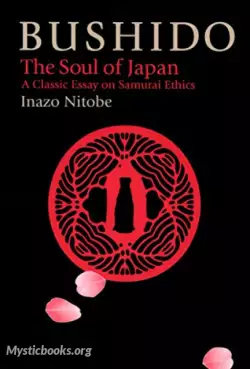
Timeline
Title
Country/Nationality
Inazo Nitobe
Nitobe Inazō was a Japanese author, educator, agricultural economist, diplomat, politician, and Protestant Christian during the late Meiji era.
Nitobe was born in Morioka, Mutsu Province (present-day Iwate Prefecture). His father Nitobe Jūjirō was a retainer to the local daimyō of the Nanbu clan. His grandfather is Nitobe Tsutō. His great-grandfather is Nitobe Denzō [ja] (Koretami). One of his cousins is Nitobe Inao [ja]. His infant name was Inanosuke. Nitobe left Morioka for Tokyo in 1871 to become the heir to his uncle, Ōta Tokitoshi, and adopted the name Ōta Inazō. He later reverted to Nitobe when his older brother Nitobe Shichirō died.
Nitobe was in the second class of the Sapporo Agricultural College (now Hokkaido University). He was converted to Christianity under the strong legacy left by William S. Clark, the first Vice-Principal of the College, who had taught in Sapporo for eight months before Nitobe's class arrived in the second year after the opening of the college and so they never personally crossed paths.
Nitobe's classmates who converted to Christianity at the same time included Uchimura Kanzō. Nitobe and his friends were baptized by an American Methodist Episcopal missionary Bishop M. C. Harris. Nitobe's decision to study agriculture was caused by the hope expressed by Emperor Meiji that the Nitobe family would continue to advance the field of agricultural development (Nitobe's father had developed former wasteland in the north of the Nambu domain near present-day Towada, now part of Aomori Prefecture, into productive farmland).
In 1883, Nitobe entered Tokyo Imperial University for further studies in English literature and in economics. Disappointed by the level of research in Tokyo, he quit the university and sought study opportunities in the United States.
Nitobe was a prolific writer. He published many scholarly books as well as books for general readers (see below). He also contributed hundreds of articles to popular magazines and newspapers. Nitobe, however, is perhaps most famous in the west for his work Bushido: The Soul of Japan (1900), which was one of the first major works on samurai ethics and Japanese culture written originally in English for Western readers (The book was subsequently translated into Japanese and many other languages).
The reception and impact of Bushido: The Soul of Japan were quite different in Japan and the West, however, with Japanese scholars such as Inoue Tetsujirō and Tsuda Sokichi criticizing or dismissing the book. It was not until the 1980s that Bushido: The Soul of Japan reached the height of its popularity in Japan, and is now the most widely available work on the subject of bushido. In the West, Bushido: The Soul of Japan has been a best-seller since the outbreak of the Russo-Japanese War of 1904-05, and many influential foreigners read the book, among them President Theodore Roosevelt, President John F. Kennedy and Robert Baden-Powell, the founder of the Boy Scouts. It suggested to H. G. Wells a way to "solve the problem of combining progress with political stability". The book has been criticized as portraying the samurai in terms of Western chivalry which had different interpretations compared to the pre-Meiji period bushido as a system of warrior values that were focused on valor rather than morals. This book nonetheless was a pioneering work of its kind.
Nitobe's writings are now available in Nitobe Inazō Zenshū (the Complete Works of Inazo Nitobe), a 25-volume set from Kyobunkan, 1969–2001. His English and other western language work are collected in the 5 volume Works of Inazo Nitobe, The University of Tokyo Press, 1972.
Major critical essays on Nitobe's life and thought were collected in John F. Howes, ed. Nitobe Inazo: Japan's Bridge Across the Pacific (Westview, 1995). Full biography in English is: George M. Oshiro, Internationalist in Pre-War Japan: Nitobe Inazo, 1862–1933 (UBC PhD. Thesis, 1986); and in Japanese by the same author: Nitobe Inazo, Kokusai-shugi no Kaitakusha (Chūō Daigaku Shuppanbu, 1992). The most detailed account of Nitobe's life after his tenure in the League of Nations, available in English, is: Nitobe Inazo, The Twilight Years, by Uchikawa Eiichiro (Kyobunkwan, 1985). Six (6) critical essays on Nitobe's legacy are included in Why Japan Matters!, vol. 2, edited by Joseph F. Kess and Helen Lansdowne (University of Victoria, 2005), pp. 519–573, 655–663.
His portrait was featured on the Series D of ¥5000 banknote, printed from 1984 to 2004.
The Nitobe Memorial Garden at the University of British Columbia in Vancouver, British Columbia, Canada, is named in his honour. A second memorial garden has been built at the Royal Jubilee Hospital in Victoria, British Columbia, Canada
Books by Inazo Nitobe

Bushido: The Soul of Japan
Bushido: The Soul of Japan is, along with Hagakure by Yamamoto Tsunetomo a study of the way of the samurai. A best-seller in its day, it was read by many influential foreigners, among them President Theodore Roosevelt, President John F. Kennedy and R...